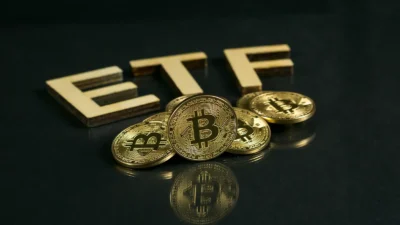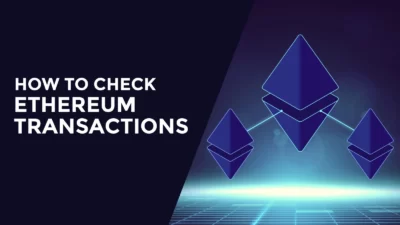Table of Contents
ToggleProof of stake is a newer way to validate transactions on a blockchain, and it’s been gaining in popularity in recent years. Unlike proof of work, which requires miners to use substantial computing power to verify transactions, proof of stake simply requires holders of the currency to hold onto their coins.
What is Proof Of Stake in crypto?
Proof of stake is a method used in the cryptocurrency world to validate transactions and generate new blocks. Instead of using proof of work, wherein miners are rewarded for their computing power, proof of stake requires participants to hold coins in their wallets for a certain amount of time to be considered eligible for “staking.”
How does Proof of Stake (POS) work?
It is a replacement for the Proof of Work (POW) consensus mechanism that was initially used in Bitcoin and other cryptocurrencies. POS requires users with coins or tokens on the network to stake their coins as collateral and vote on proposed blocks. This ensures that users are investing their own money into the blockchain, creating a financial incentive for them to follow the protocol correctly, resulting in a more secure and robust blockchain.
Proof Of Stake vs. Proof Of Work
Proponents of Proof of Stake argue that it is more energy-efficient, secure, and potentially cheaper than its predecessor. PoS also offers a higher block production rate as miners who stake their coins with PoS digital wallets will be incentivized by rewards rather than depending on the computational power required to solve complex mathematical problems.

On the other hand, supporters of Proof of Work claim that it is infinitely more secure since miners must compete with each other, which makes compromising the network much more difficult.
Ultimately, both technologies have their advantages and disadvantages, so understanding both sides helps determine which one better suits your needs.
Pros of POS
1. Security
One of the biggest advantages of POS is that it is much more secure than other consensus mechanisms. With POS, there is no need for powerful hardware or a large amount of electricity, which means that it is much less vulnerable to attacks.
2. Energy Efficiency
POS is also much more energy efficient than other consensus mechanisms. This is because POS does not require miners to use powerful hardware or to expend a large amount of electricity to validate transactions.
3. Reduced Centralization
With POS, there is no need for powerful hardware or a large amount of electricity, which means that it is accessible to a wider range of people. This can help to create a more decentralized industry, which is one of the key goals of cryptocurrency.
4. Faster Transactions
POS also being able to process transactions much faster than other consensus mechanisms. This is because POS does not require miners to use powerful hardware or expend a large amount of electricity to validate transactions.
5. Improved Sustainability
Finally, POS has the advantage of being much more sustainable than other consensus mechanisms. This is because POS does not require miners to use powerful hardware or expend a large amount of electricity to validate transactions.
Cons of POS
1. Lack of Security
If a POS system is hacked, hackers may gain access to credit card numbers, addresses, and other personal information. This can lead to identity theft and other financial crimes.
2. High Cost
POS systems can be quite expensive, especially for small businesses. In addition to the initial cost of purchasing the system, businesses must also pay for ongoing maintenance and support. These costs can add up over time and may eventually outweigh the benefits of using a POS system.
3. Complexity
POS systems can be complex and difficult to use, especially for businesses that are not tech-savvy. Employees may need extensive training to use the system properly, which can be time-consuming and expensive.

4. Limited Functionality
POS systems typically only offer basic features and functionality. For businesses that require more advanced features, such as inventory management or customer loyalty programs, a POS system may not be the best option.
5. Privacy Concerns
Some people worry about the privacy implications of using a POS system. Since POS systems store customer data, there is always the potential for this data to be leaked or stolen.
Proof Of Stake Coins Lists
1. Cardano
Cardano is a proof-of-stake coin that offers an attractive and secure way of investing in the cryptocurrency market. It has been gaining popularity as one of the top coins, alongside Ethereum and Bitcoin, due to its strong technology and reliability.
2. Tezos (XT2)
The proof-of-stake system is becoming an increasingly popular method of verifying transactions and securing networks in the crypto world. One of the most popular coins that developers are raving about within this system is Tezos (XT2).
3. Algorand (ALGO6)
Algorand is a coin that has drastically improved the Proof of Stake (PoS) protocol and the consensus algorithm. Algorand only requires a very low minimum amount of currency to take part in the consensus process, meaning more users have access to actively participate and experiment with staking rewards.
4. Tron (TRX)
TRX, part of the Tron project, is one of the more popular proofs of stake (POS) coins currently on the market. With a total supply of over 99 billion TRX tokens, Tron has found a way to solve scalability issues by providing decentralized blockchain solutions for digital content such as streaming and gaming services.
5. Cosmos(ATOM)
Cosmos, or ATOM, is a leading Proof-of-Stake platform that offers a high return on small investments. It provides the ability to create multiple proof-of-stake blockchains of varying sizes, allowing for customized blocksize, flexible consensus protocols, and varied application functionality.
The Final Note
Proof of stake is revolutionizing the world of digital currency. Mining used to be a complicated and resource-draining process, while proof of stake provides a more energy-efficient solution that saves both time and money. Additionally, the popular coins that utilize this technology may prove to be more beneficial to investors as they become more widely accepted. As crypto enthusiasts continue to shift towards this alternative system of mining, it will be interesting to witness how it develops further shortly.







